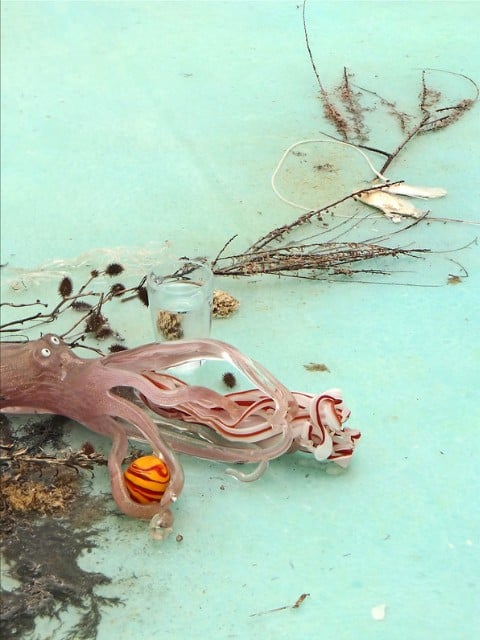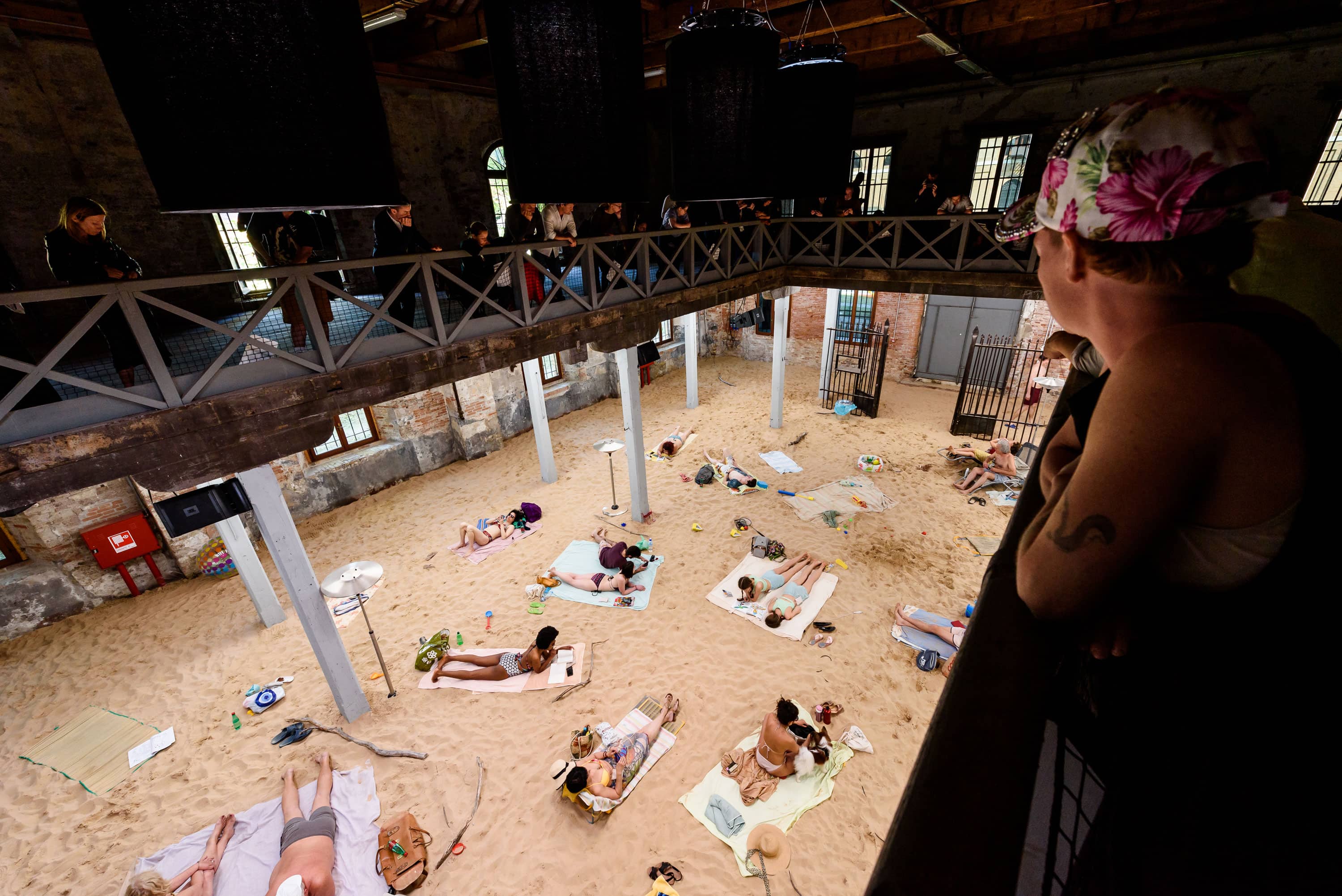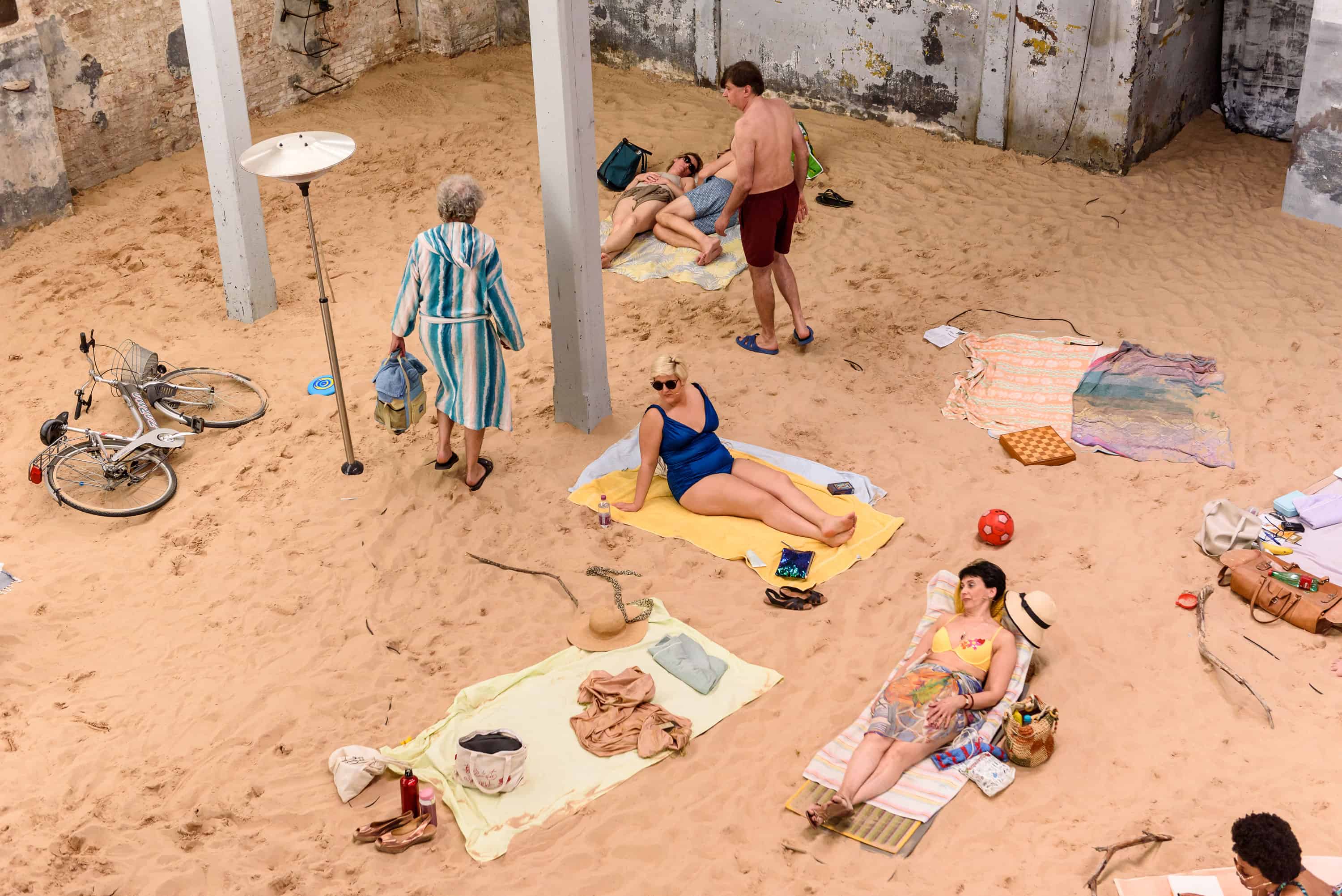We live in Anthropocene, era of erased seasons and growing temperatures. The climate change, hoovering above the everyday hustle and bustle in the stratosphere of media coverage, functions as numen of the 21st century. Naturally, the art world became obsessed with bringing global warming closer to its viewers, collectors, and dealers. This year Venice Biennale confronted the problem in many pavilions, awarding the top prize to an opera casting a shadow of ecological disaster upon unsuspicious beachgoers. Yet, what many of works included in Biennale seem to address is the difficulty to coincide the realm of major global processes and individual experience. Climate change is, according to Timothy Morton, a hyper-object, whose sheer size makes it unintelligible. The experience of such objects is always oblique, through their effects, radiance and virtual presence. In Sun & Sea (Marina) presented in the Lithuanian Pavilion, characters lament the rapidly changing conditions of their lives, singing frustration and boredom out, while their alienation from the ecological reality grows. The stasis of the piece mirrors the stasis of social consciousness, aware of the threat yet continuing life as normal. The crisis is supressed, absent, virtual, unspeakable. It is communicated through scientific reports but remains misunderstood, ignored. As if the language necessary to convey the ecological crisis was undergoing the same processes of desertification, eutrophication, and erosion as the environment.
Laure Prouvost, Deep See Blue Surrounding You, photo: Jean Pierre Dalbera
Laure Prouvost, Deep See Blue Surrounding You, photo: Jean Pierre Dalbera
This aphasia can be only elucidated through the evocative idiom of contemporary art, as it has to be approached obliquely, in the manner hyper-objects operate. In the project Laure Prouvost developed for the French Pavilion in Biennale she created a dreamy sea/landscape inside the building, making the threat of rising seas palpable – groups of eerie objects, debris, food waste, and plastic sea creatures lie on the turquoise-colour floor, a posthuman seabed. This bizarre environment has a bitter-sweet aura of a therapeutic dream, resolving phobias by showing the dreamer a world after the catastrophe they expect. The central point of the show is “Deep See Blue Surrounding You”, a film narrating the artist’s journey from Paris to Venice Biennale, a journey she calls ‘a road trip to the sea of our subconscious’. The sea, as an omnipotent metaphor of threat and unknown, evokes detectable but intangible apocalypse. Or even less – in this haunting, but enjoyable assemblage, there is only a hint of the danger, a spicy accent of decay. Prouvost celebrates the paradigm of journey and encounter as both a way out of the upcoming catastrophe and the reality brought about by the age of rising seas.
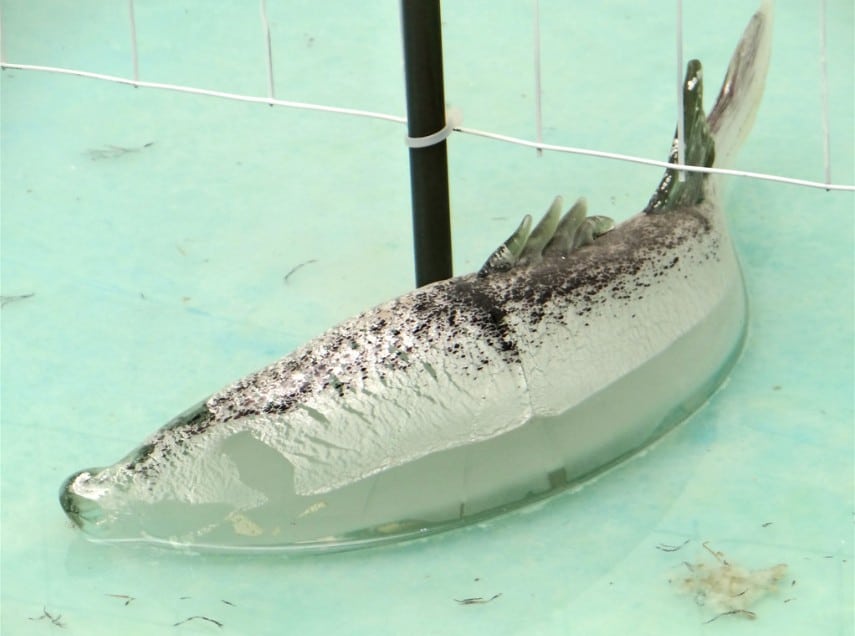
Laure Prouvost, Deep See Blue Surrounding You, photo: Jean Pierre Dalbera
A subconscious reverie, then, is a mode that is most suited for articulation of ecological crisis. Yet, while it communicates the danger, it cannot grasp the nature of the process, its pulsation and impact on the nature as we know it. Climate change remains a spectre that haunts us, yet cannot be entirely embodied and thus, tackled – the body of the hyper-object is ethereal, ghostly. To portray a planet that is about to crumble means to grasp what has not come yet, a virtuality, a spectre. This is why so many artists tend to play on the viewer’s premonitions, anxieties and gut feelings. In Renato Leotta’s piece Mais ou Menos, five navy blue cotton pieces were dipped in the ocean, which marked them with irregular lines of salt, delicate traces of waves. Hanged next to each other, the textiles appear nearly threatening, for they portray fluctuations of global waters. A mere representation of natural rhythms catalyses a series of hunches, anxieties and unease in the viewer, actualising the future which is yet to come, but is already lost to us. The apocalypse environmental art is meant to herald is bifurcated, as it is happening now, but it will take its toll within decades. The horizon we can feel from here is blurry but unpleasant. Nature scares us.
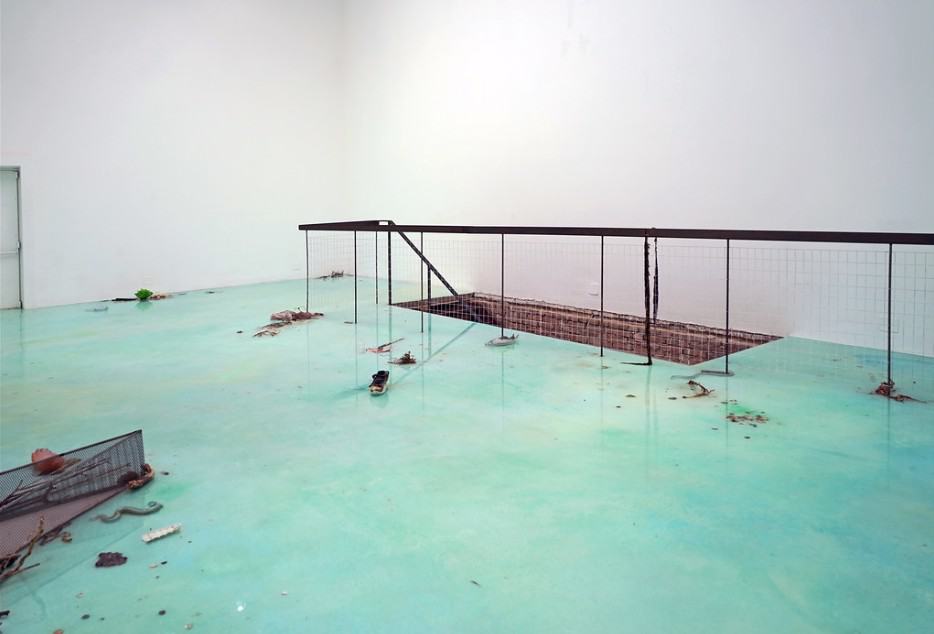
Laure Prouvost, Deep See Blue Surrounding You, photo: Jean Pierre Dalbera
References: Timothy Morton, Hyperobjects: Philosophy and Ecology after the End of the World, University Of Minnesota Press, 2013; Mark Fisher, Ghost of My Life: Writings on Depression, Hauntology and Lost Futures, Zero Books 2014
Sun & Sea (Marina). Opera-performance for 13 voices, Lithuania Pavilion, 58th International Art Exhibition – La Biennale di Venezia, MayYou Live In Interesting Times, Photo by: Andrea Avezzù, Courtesy: La Biennale di Venezia
Sun & Sea (Marina). Opera-performance for 13 voices, Lithuania Pavilion, 58th International Art Exhibition – La Biennale di Venezia, MayYou Live In Interesting Times, Photo by: Andrea Avezzù, Courtesy: La Biennale di Venezia





